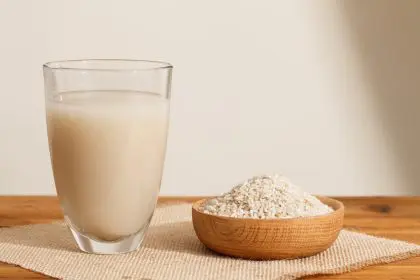We’ve been programmed to crave sweet, salty, and fatty foods since childhood. Just think about it. What tastes dominated your favorite snacks growing up? Probably not bitterness. That sharp, sometimes unpleasant flavor has been gradually engineered out of our modern diet, replaced with ever-increasing sweetness and saltiness that keep us coming back for more. But what if avoiding bitter foods has thrown both our taste perception and metabolism seriously out of whack? The bitter truth might just be the reset button your body needs.
Why we’re hardwired to avoid bitterness
Our aversion to bitter flavors isn’t just a matter of preference. It’s actually an evolutionary survival mechanism. In nature, bitterness often signaled potential toxicity. Plants developed bitter compounds as a defense against being eaten, and humans who avoided these bitter tastes were less likely to consume poisonous substances. Smart move, prehistoric ancestors.
But here’s the catch. Not all bitter compounds are harmful. In fact, many are incredibly beneficial. Our bodies evolved sophisticated detoxification systems specifically designed to process these natural plant compounds. Modern food manufacturing has nearly eliminated bitterness from our diets, and in doing so, may have inadvertently shut down crucial metabolic pathways that these compounds activate.
Think about coffee, dark chocolate, or hoppy beer. These beloved bitter foods and drinks have devoted followings despite their edge. That’s because we can learn to appreciate bitterness, and our bodies might actually need it more than we realize.
How your taste buds got hijacked
Our modern food environment bears little resemblance to what humans evolved eating. Today’s ultra-processed foods deliver extreme versions of sweetness and saltiness that simply didn’t exist in nature. A single soda contains more sugar than our ancestors might have consumed in a week.
This constant exposure to hyper-palatable foods doesn’t just make us crave more of them. It actually desensitizes our taste buds, requiring increasingly intense flavors to register the same taste satisfaction. It’s like turning up the volume on your headphones higher and higher until you can barely hear normal conversation anymore.
Your taste receptors undergo a form of sensory adaptation when continuously exposed to certain flavors. Sugar is perhaps the most notorious culprit. After weeks, months, or years of high sugar consumption, your baseline for sweetness shifts dramatically. Fruits that should taste perfectly sweet begin to taste bland, while unsweetened foods can taste downright unpleasant.
The same phenomenon happens with salt, fat, and yes, the absence of bitterness. When your diet lacks bitter foods, even mild bitterness can seem overwhelmingly unpleasant. It’s a vicious cycle that keeps us reaching for the same flavor profiles while avoiding the very tastes that might help recalibrate our palates.
The bitter-metabolism connection
Beyond just taste preferences, bitter compounds have a surprising effect on your metabolism. When you eat something bitter, it triggers a cascade of responses throughout your digestive system and beyond.
Bitter foods stimulate the release of digestive enzymes and bile, essentially priming your digestive system to process food more efficiently. This increased digestive efficiency can lead to better nutrient absorption and improved breakdown of fats.
But the effects go deeper than digestion. Many bitter compounds activate metabolic pathways that influence how your body handles glucose and fat. Certain bitter substances have been shown to improve insulin sensitivity, potentially helping your body maintain steadier blood sugar levels and reduce fat storage.
There’s also growing evidence that some bitter compounds can stimulate thermogenesis, the process by which your body generates heat and burns calories. By activating specific receptors, these compounds may increase energy expenditure without requiring additional physical activity.
Perhaps most fascinating is how bitter foods might influence your gut microbiome, the complex ecosystem of bacteria living in your digestive tract. These microbes play a crucial role in metabolism, and bitter compounds appear to encourage the growth of beneficial bacterial strains associated with leaner body composition.
The taste bud reset button
The good news is that your taste buds are incredibly adaptable. While they may have been led astray by processed foods, they can be retrained surprisingly quickly. Adding bitter foods to your diet isn’t just about tolerating an unpleasant taste. It’s about recalibrating your entire flavor perception system.
When you consistently introduce bitter foods, something remarkable happens. Your bitter taste receptors become less sensitive to moderate bitterness, making formerly challenging foods more enjoyable. Simultaneously, your sweet and salt receptors become more sensitive, allowing you to detect and appreciate these flavors at much lower concentrations.
This recalibration often takes just two to four weeks of consistent exposure. Many people report that after this adjustment period, previously beloved ultra-sweet foods like candy and soda begin to taste overwhelmingly, almost unpleasantly sweet. Meanwhile, naturally sweet foods like berries and carrots develop richer, more complex flavors.
The result isn’t just a shift in preferences, but potentially a transformation in your relationship with food. When moderate sweetness satisfies your cravings, you naturally consume less sugar. When you enjoy bitter vegetables, you eat more of them. These changes can lead to improved nutritional intake and, for many people, easier weight management.
Bitter foods worth befriending
Ready to reintroduce your taste buds to bitterness? Consider starting with these naturally bitter foods that offer significant metabolic benefits:
Dark leafy greens like arugula, dandelion greens, and endive contain compounds that support liver function and detoxification. Their bitterness ranges from mild to quite pronounced, making them good starter options.
Cruciferous vegetables including broccoli, Brussels sprouts, and radishes contain sulfur compounds that give them their distinctive bite. These compounds have been linked to improved insulin sensitivity and fat metabolism.
Coffee and tea, particularly green tea, contain bitter compounds with thermogenic properties that may boost metabolism. Just skip the sugar and artificial sweeteners which counteract both the taste-adjusting and metabolic benefits.
Dark chocolate with at least 70% cacao contains flavanols that improve blood vessel function and may enhance fat metabolism. Start with a moderate percentage and gradually work your way up to darker varieties as your taste buds adapt.
Bitter herbs and spices like turmeric, ginger, and fenugreek can be incorporated into cooking to gradually introduce more bitterness while taking advantage of their anti-inflammatory properties.
Citrus peels and zest contain concentrated bitter compounds that stimulate digestive enzymes. Try adding lemon or orange zest to dishes for both flavor and metabolic benefits.
Embracing the bitter path
Incorporating more bitterness into your diet doesn’t mean suffering through unpleasant meals. Start gradually, with milder bitter foods, and give your taste buds time to adjust. Pairing bitter foods with healthy fats or small amounts of natural sweetness can help ease the transition.
Try adding a handful of arugula to your usual salad mix, gradually increasing the proportion over time. Or blend some spinach into a fruit smoothie, slowly adjusting the ratio to include more greens and less fruit.
Cooking techniques can also help moderate bitterness while preserving beneficial compounds. Roasting Brussels sprouts brings out their natural sweetness, making the bitterness less dominant. Adding a small amount of salt to bitter greens can balance their flavor profile.
Remember that the goal isn’t to make every meal an exercise in endurance. It’s to gradually expand your palate while reactivating metabolic pathways that processed foods have silenced. Even modest increases in bitter foods can start shifting both your taste perceptions and your metabolism.
The bottom line
The bitter truth is that our modern diet has led us away from flavors our bodies evolved to process, potentially compromising both our taste perception and our metabolic health. Reintroducing bitter foods isn’t about punishing yourself with unpleasant tastes. It’s about reclaiming your natural ability to enjoy a wide spectrum of flavors while reactivating beneficial metabolic pathways.
As with most aspects of nutrition, the answer isn’t in the extremes but in the balance. Your taste buds and metabolism thrive on variety. By expanding your palate to include more bitterness, you’re not just changing what you enjoy eating. You might be fundamentally shifting how your body processes everything you eat.
Sometimes the most powerful changes don’t require adding something completely new to your routine, but simply rediscovering something your body already knows how to use. The bitter path might just lead to some surprisingly sweet results for both your palate and your waistline.














